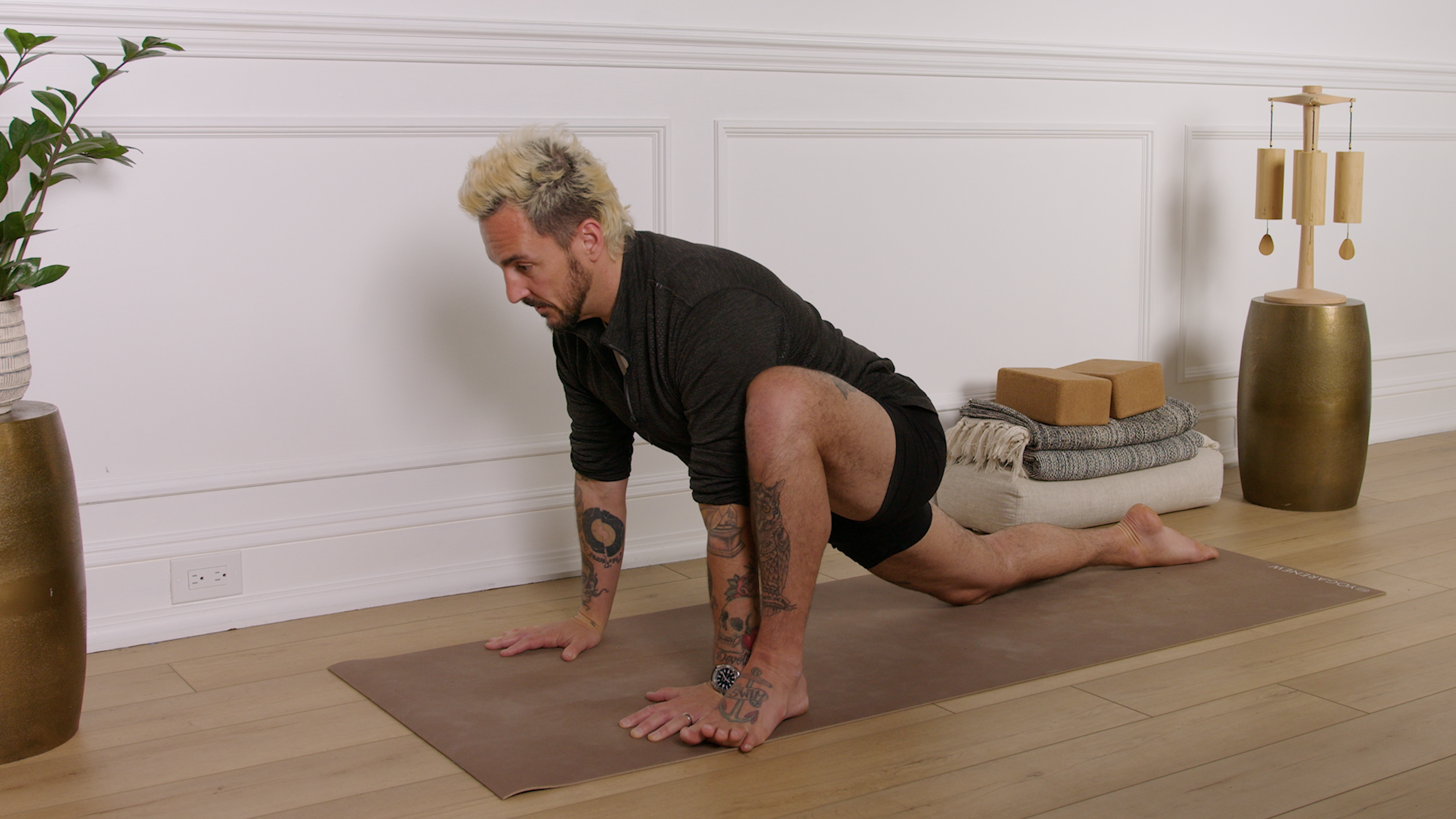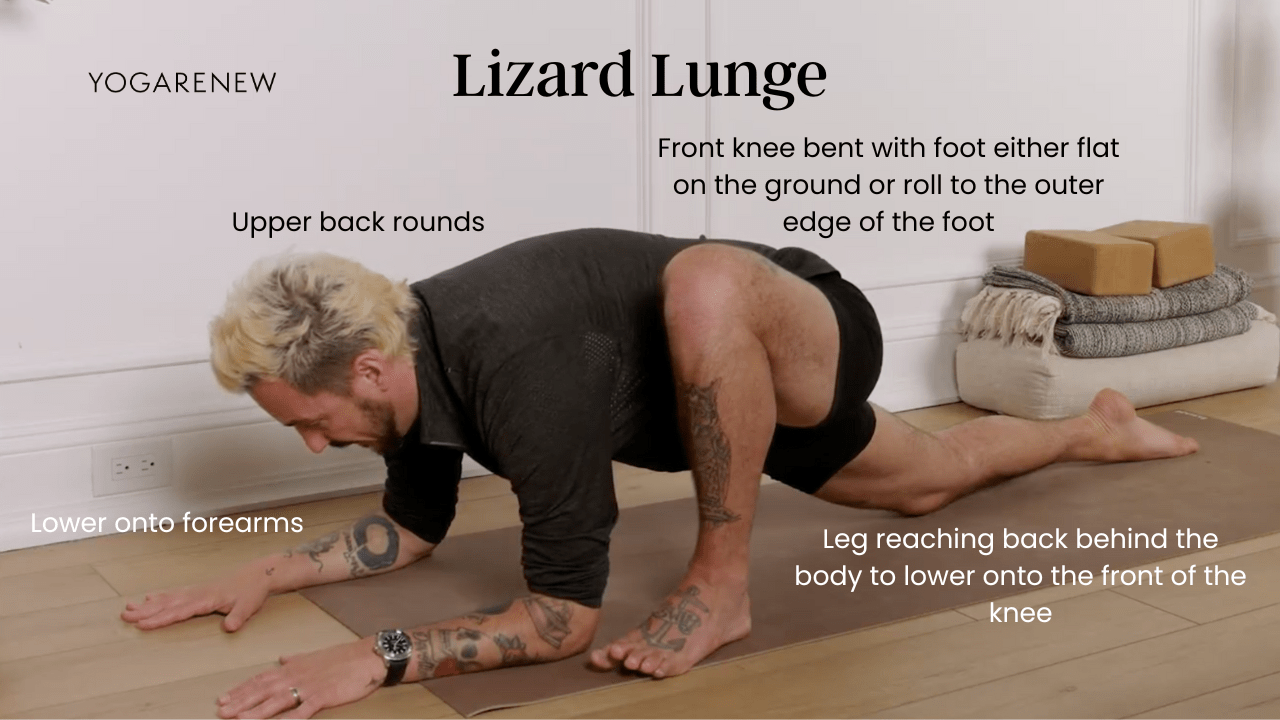What is Lizard Lunge?
English Name: Lizard Lunge
Sanskrit Name: Utthan Pristhasana (pronounced oot-THAHN preesth-HAH-suh-nuh)
Category: Hip Opener, Deep Stretch, Grounding, Intermediate

English Name: Lizard Lunge
Sanskrit Name: Utthan Pristhasana (pronounced oot-THAHN preesth-HAH-suh-nuh)
Category: Hip Opener, Deep Stretch, Grounding, Intermediate
Lizard Lunge, or Utthan Pristhasana, is a deep, grounding yoga pose that targets the hips, hamstrings, and hip flexors. Often used to prepare for deeper hip openers or arm balances, this posture stretches the inner thighs and groin while building strength and mobility in the legs and core.
This pose challenges you to stay with discomfort in a constructive way, helping to release deep-seated tension—physically and emotionally—stored in the hips. With mindful breath and proper support, Lizard Lunge becomes a powerful posture for cultivating flexibility, resilience, and focus.


1. Knee Injury or Sensitivity: Use padding under the back knee or keep it lifted
2. Hip Joint Issues: Deep flexion may aggravate pre-existing conditions
3. Lower Back Pain: Avoid collapsing in the spine—use props or stay upright
4. Pregnancy (second or third trimester): Modify with blocks and avoid compression
5. Tight Hamstrings or Groin: Use props to reduce intensity
Lizard Lunge is a profound hip opener that cultivates strength, flexibility, and mental focus. It targets muscles and fascia that are often tight or neglected, helping to improve posture, release tension, and support deeper yoga practices. Whether used in warm-up or as a peak pose, Utthan Pristhasana empowers you to meet intensity with steadiness and breath.
Yes! Use blocks or stay on your hands. It’s more important to stay long and supported than to force depth.
Try dropping the back knee and adding support under the hips or hands.
Yes—with modifications. Use props and avoid forcing depth. Over time, flexibility will improve.
Your New Favorite Yoga App. For Free.